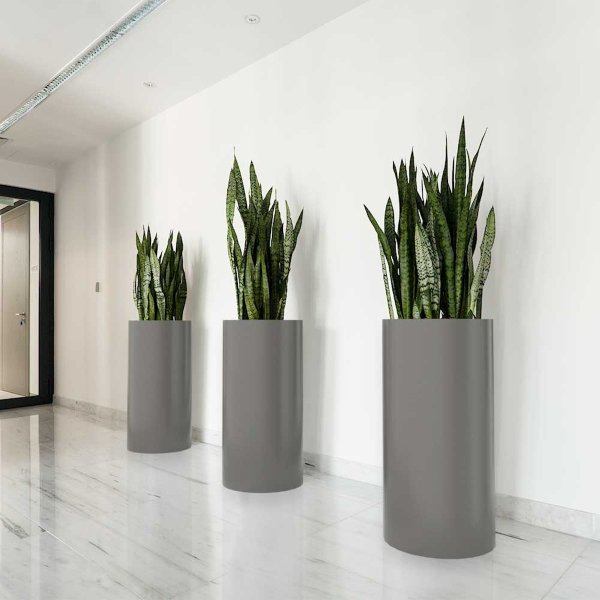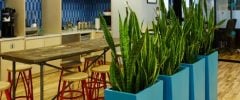How Interiorscape Design Shapes First Impressions

First impressions matter. As the saying goes, “You’ll never get a second chance to make a first great impression.” It takes only a few seconds—usually between 3 and 10—for someone to form an opinion based on appearance, body language, demeanor, and even the style of clothing. We all know this instinctively from the time and energy we invest in our own look before leaving home, right down to maintaining our wardrobe.
In the world of interiorscape design, it’s no different. Take the lobby of a building, for example—the space where first impressions begin for any company. When someone walks in and immediately says, “I love this place,” it’s obvious the designers have done their job well. Creating that instant connection through design takes skill, intention, and a deep understanding of how people respond to their surroundings. And it’s no small feat.
Elements of Interiorscape Design
Most people aren’t fully aware of the thought and effort that go into creating an interiorscape design. For most, breaking down the details simply isn’t on their radar. Elements such as color, wallpaper texture, lighting, furniture layout and style, flooring, accent rugs, artwork, window coverings, accessories, and of course, plants, all come together to form an experience that speaks to every sense at once. A bank lobby might quietly convey you can trust us, while a design studio lobby may boldly state come in and watch us create. In any case, these design elements shape the first impression visitors form the moment they walk through the door.
Every detail contributes to the overall flow and feeling of a space. When those details work in harmony, they create a cohesive and inviting atmosphere. But when they don’t, the opposite happens. Anyone who’s experienced hotel hopping knows the feeling—walking into a hotel lobby, exhausted and ready to rest, only to turn right back around because something feels off. That moment of discomfort creates a negative response, and it’s often enough to keep a guest from returning.
There can be many reasons a space misses the mark. Sometimes it’s simply a lack of understanding the key elements of design that drive positive reactions. Whatever the reason, the bottom line is that interiorscaping and interior design play a critical role in first impressions. And in today’s world—where every experience can be shared instantly on social media—a negative impression spreads fast. Even worse, a forgettable one might not be shared at all. Both can be damaging to a brand or business.
Bringing Nature Into Interiorscape Design
As everyone in our industry knows, plants give people something to talk about. Their role in interiorscape design can be subtle but vitally important to the overall look and feel of any environment. I’ve walked into many contemporary hotel lobbies that were clean and serene but missing one essential design element—biophilia. However striking a space may be, without plants, it lacks that natural connection people instinctively crave.
Part of understanding design is understanding biophilia itself. The WELL Building Standard draws on research from numerous biophilic studies, which show that humans are naturally drawn to environments that make them feel good. Plants connect us to those beneficial aspects of nature, reminding us that our surroundings play a role in our well-being. It’s simple, really—we need to design with the earth in mind to create spaces that keep us balanced.
In modern interiorscape spaces, even a single plant can make a big difference. Add a few more in a rectangular container with decorative rocks at the base, and the design gains depth and visual interest. Though simple, these touches bring warmth and life to otherwise stark settings. Without plants, rooms can feel uninviting on a subconscious level, but thoughtfully placed greenery draws us in, satisfying our innate desire for nature’s beauty, even in the most refined interiors.
Plants also solve a common design challenge—filling vertical gaps. Furniture tends to sit at a similar height, leaving corners or walls disconnected from the rest of the room. A tall specimen plant in the right decorative container fills that void, completing the design from floor to ceiling. Nothing else achieves this so gracefully, and when done well, the result feels almost magical.

The Art of Making a Lasting First Impression
As you move through different spaces, take a moment to notice what feels balanced and what’s missing. As interiorscapers, this awareness is one of our greatest tools, and bringing this insight to clients can completely change how they experience a space.
In interiorscape design, we must always remember that less is more. Just like other areas of design, using fewer but more meaningful pieces is key to creating harmony. When we collaborate with the design community, we can shape environments that not only impress but also earn lasting respect. The goal is always the same—to make a memorable first impression—and interiorscape design continues to gain worldwide recognition for the powerful role it plays in achieving that.
The power of plants, as I’ve been saying for decades, is unmatched. They may be the least expensive part of interiorscape design, but they often deliver the greatest impact. How’s that for ROI?
You May Also Like
Leave a Reply
You must be logged in to post a comment.




















